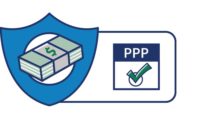The process for receiving loan forgiveness from the Small Business Administration under the Paycheck Protection Program seems simple. An HVAC contractor who received a PPP loan needs to show that the money was spent in the ways dictated by the program. This includes proving that at least 60 percent of the money went to payroll and that contracts for other expenses, such as rent, were in place prior to Feb. 15.
The SBA opened the application process and posted the necessary forms online. As with the loan application, forgiveness requires a two-step process. The HVAC contractor submits the form to the bank that originated the loan. The bank then reviews the material and submits it to the SBA for review. Those seeking loan forgiveness need to include supporting documents such as tax forms and utility statements. The SBA then either forgives the loan or flags it for inspection. Many lenders are finalizing their own processes and are telling borrowers that they need to wait to submit their applications.
Ruth King, profitability master with HVACChannel.TV, said HVAC contractors who followed all the rules should find the process fairly simple. These people kept the money in a separate bank account and paid expenses out of that account.
“If you did your homework correctly and you kept track of everything, you can submit everything and they’re either going to say yes or they’re going to say no,” King said.
Seeking Professional Help
Jennifer Pierce, co-owner of Clay’s Climate Control in Linwood, New Jersey, expects a fairly simple process as she seeks forgiveness for the firm’s PPP loan. All of Clay’s loan money went to payroll, Pierce said. She worked with her CPA to gather the information and already sent it in to her bank. King said many HVAC contractors could complete the process without any professional help.
“You can always get your CPA to help you, if it makes you feel better,” King said. “But if you followed the rules and kept everything separate, have all your data to back it up, fill out the piece of paper. It’s not hard.”
Most firms that received loans already kept good financial records, she said. Now it’s just a question of sending them in. King is a numbers person, so if it all adds up, it should work. Tenley Carp and Megan Mitchell are lawyers with Arnall Golden Gregory LLP. They said the process can prove more challenging.
“There is really nothing simple about submitting your loan forgiveness application,” Carp said.
PPP Created in Response to Crisis
Congress created the PPP as an emergency response to the economic crisis brought on by the coronavirus pandemic. It was meant to help small businesses cover expenses and retain as many employees as possible. This was a brand-new program that had never been tried before, Carp said. It moved a massive amount of money — $349 billion — in less than two weeks. The money went through all kinds of financial institutions, ranging from the biggest banks to small credit unions to online lenders.
And the rules changed constantly. A couple of weeks after the initial money ran out, the federal government approved an additional $320 billion. Then another Congressional act created more options for loan recipients when it came to the timeline for spending the money on payroll.
So the first question an HVAC contractor needs to answer is how was the money spent and when? Windows differ for payroll and non-payroll expenses. Then HVAC contractors need to determine what exemptions and safe harbors take effect. Finally, contractors who received any other help, such as pandemic-related tax credits, need to determine how those may impact their loan forgiveness.
Then there is the question of what kind of shape a contractor was in between Feb. 15 and the end of April. If operations continued as normal, the process is fairly simple. However, while HVAC contractors were an essential business during that time, it remained a rough period until temperatures started to rise.
Wait and See What Federal Government Decides
This is why contractors might want to consult an attorney or CPA, Carp said. Banks are unlikely to provide much help, even though they originated the loans and handle the forgiveness application. Many small business owners felt frustrated with banks’ level of responsiveness during the application process, and Carp said the forgiveness process probably won’t be much better. In fact, she said, many banks, especially the larger ones, plan on automating the process. Chris Czarnecki, government relations representative and coalitions manager for the Air Conditioning Contractors of America, said many HVAC contractors found smaller banks easier to work with on the front end.
“It will probably be the same,” Czarnecki said.
There are reasons to wait before filing for loan forgiveness anyway. Treasury Secretary Steve Mnuchin floated the idea of turning all the loans under $150,000 into grants, forgiving them without review. Czarnecki said ACCA is among the groups supporting an act that would forgive all PPP loans of $150,000 or less upon the completion of a one-page forgiveness document. He said studies show this could save an estimated $7 billion in time and effort.
Whenever the applications are submitted, Mitchell said to expect a five-month wait to get a response. If the SBA for some reason rejects the forgiveness application, an audit process begins. Carp said most large loans, meaning over $2 million, will be likely audited. In May, the Treasury Department said most loans below that threshold will face less scrutiny. Since then, however, controversy around the program has grown and stories have emerged of recipients spending their PPP money on luxury cars. Mitchell said she expects a certain amount of employee whistleblowing around these loans.
“The starting point for how closely those will be investigated will depend on the dollar amount and also some other triggers that might catch an investigator’s eye,” Carp said.
If a loan is fully or partially rejected for forgiveness, the borrower needs to pay it back to the originating bank. The loans charge 1 percent interest with terms of two to five years. Payments can deferred up to six months, but the interest starts accumulating.
While most consider those the terms very favorable, many borrowers viewed the loans as free money. Failing to have the loan forgiven creates an unexpected extra expense for many small businesses, Mitchell said. Between the cost of hiring help for the application process and the potential cost of paying back part or all of the loan, that free money now looks a little more expensive.











